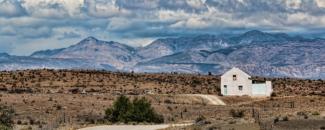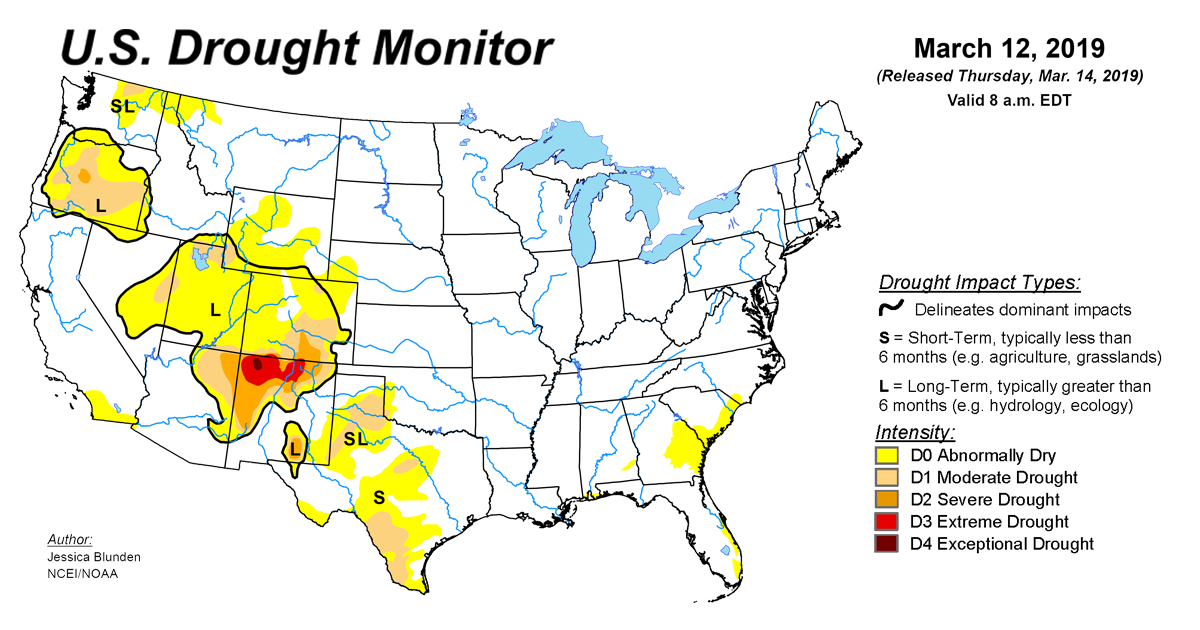
According to the March 12, 2019, U.S. Drought Monitor, moderate to exceptional drought covers 6.0% of the United States, a decrease from last week’s 10.4%. The worst drought categories (extreme to exceptional drought) are the same as last week, 0.4%.
Low-pressure systems in the upper atmosphere dominated the weather across the contiguous U.S. The week started with a deep low-pressure trough and its associated surface cold front over the eastern contiguous U.S., and another low-pressure trough forming over the Pacific Northwest.
Pacific lows and fronts migrated through the northwest trough and tracked across the central U.S., spreading above-normal precipitation across the Southwest, northern Plains, and Ohio and Tennessee Valleys. The lows pulled Canadian air masses behind them, with the clouds, precipitation, and Canadian air keeping much of the contiguous U.S. colder than normal, especially in the northern Plains and Pacific Northwest.
The Gulf of Mexico coast, Eastern Seaboard, and parts of the Plains were drier than normal. Drought continued to contract in the wet West and parts of the southern High Plains, Hawaii, and Puerto Rico. Abnormal dryness expanded in parts of the Southeast and Texas, where dryness has persisted for the last three months.
Abnormal dryness and drought are currently affecting over 39 million people across the United States—about 12.7% of the country’s population.

The full U.S. Drought Monitor weekly update is available from Drought.gov.
In addition to Drought.gov, you can find further information on the current drought as well as on this week’s Drought Monitor update at the National Drought Mitigation Center. See their recent news releases.
The most recent U.S. Drought Outlook is available from NOAA’s Climate Prediction Center and the U.S. Department of Agriculture provides information about the drought’s influence on crops and livestock.
For additional drought information, follow #DroughtMonitor on Facebook and Twitter.



